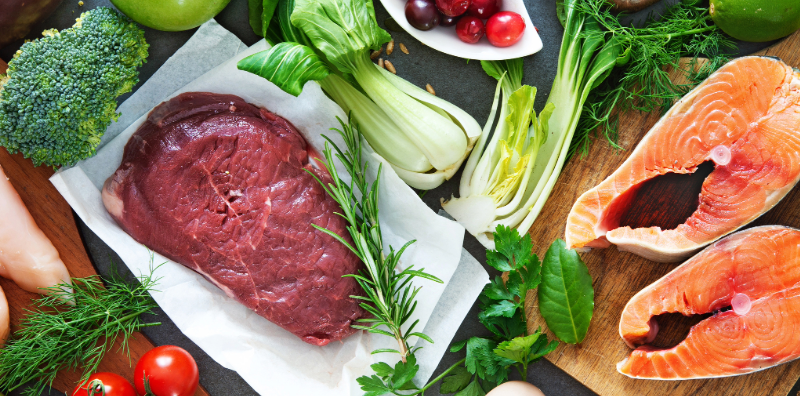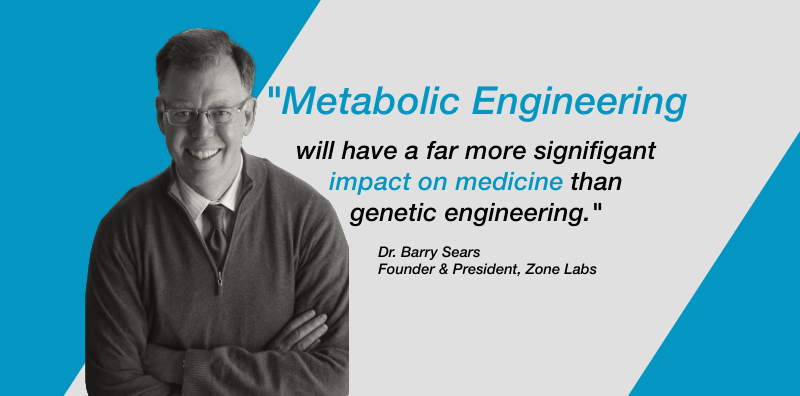Although the Zone diet is a clinically proven dietary method to reduce insulin resistance, you must also reduce chronic low-level inflammation and accelerate the repair of damaged tissue caused by oxidative stress. This requires an adequate daily intake of omega-3 fatty acids and polyphenols. Unfortunately, this is not a reality for many. As a result, virtually everyone is deficient in these two essential nutrients to get you to the Zone. However, this can be easily addressed by supplementation with refined omega-3 fatty acid concentrates and polyphenol extracts.
Omega-3 Fatty Acids
You need adequate omega-3 fatty acids to produce hormones known as resolvins that reduce chronic low-level inflammation that drives the development of insulin resistance. Dr. Sears first wrote of the importance of resolvins in 2002 with the publication of The OmegaRx Zone, which started the fish oil revolution.
In addition to reducing low-level chronic inflammation, adequate levels of omega-3 fatty acids will also activate AMPK.
But how much omega-3 fatty acids do you need? Your blood will tell you. A simple at-home finger stick test that will precisely tell you the amount of omega-3 fatty acids you need. Approximately 2.5 grams of omega-3 fatty acids (EPA and DHA) daily will be sufficient for most individuals. The typical intake of EPA and DHA in the American diet is about 0.1 mg daily.
Polyphenols
Polyphenols are the chemicals that give fruits and vegetables their color, but their metabolic importance is because they also stimulate the repair of damaged tissue by reducing oxidative stress. There are more than 8,000 known polyphenols. But which ones and how much?
As Dr. Sears described in his book The Mediterranean Zone (published in 2014), the “best of the best” is likely a subclass of polyphenols known as delphinidins. These polyphenols give red wine its color. Clinical studies indicate that therapeutic effects are observed between 200 and 400 mg of delphinidins per day. For comparison, a glass of red wine contains less than 2 mg of delphinidins.
But how much do you need? Again, your blood will tell you. There is a blood that measures glycosylated hemoglobin (HbA1c). Your goal is to have your HbA1c level close to 5.0 percent. Above 5.7 percent, you have significant insulin, and if HbA1c levels exceed 6.5 percent, you have type 2 diabetes. The delphinidins reduce HbA1c by activating AMPK to generate greater glucose uptake by the cell.







8 comments
My HbA1c is 5.3. That’s in the “yellow” zone according to the data sheet that was included in the test. I currently take 1 MaquiRx/day. I’ve very strict w/ diet and exercise chronically. I also take a full dose of OmegaRx every day. If i take more than that, i have trouble sleeping for some reason.
By how much would you recommend i increase my MaquiRx daily intake to get that down to “green” zone?
I’ve asked in the past but are you still hesitant to recommend berberine for this? Just want to make sure you position hasn’t changed.
I would recommend doubling the MaquiRx to two capsules per day to further reduce oxidative stress that leads to increased HbA1c. Keep in mind that your current level of HbA1c at 5.3 percent puts you into the top 5 percent of Americas. An even more effective way to get a better balance of dietary protein to the glycemic load at every meal.
Berberine is an alkaloid that inhibits the first step of ATP synthesis in the mitochondria (doi:10.7150/ijbs.54604). Poisoning your mitochondria is not a great long-term strategy. Following Metabolic Engineering provides a far more efficient dietary approach as it allows you to restrict calories without hunger or fatigue.
-Barry
Thank you for the response! I will double MaquiRx and retest in a few months. I didn’t realize 5.3 was in that category but comparisons to the general population don’t tell you much if you actually want to be healthy and live a long life. 🙂
I have been taking beberine off and on for a while now. I have a family history of type II diabetes and colon cancer. Berberine has been claimed to be beneficial for blood sugar control and intestinal inflammation so I was just trying to stay ahead of that. What I really need to do is double down on the zone.
Thanks again!
I’m not sure if this is the right place to ask a somewhat-related question: What are your thoughts on urolithin-A? Is it actually good for mitochondrial health? If so, is there overlap in mode of action with delphinidins? Is there any research on delphinidin supplementation and mitochondrial health? I would love to hear you thoughts (YouTube so everyone can benefit?).
The story of Urolithin A is a good indication of the complexity of polyphenol metabolism.
First, Urolithin A It is a microbial-induced metabolite of natural polyphenols, in particular ellagic acid.
The primary source of ellagic are polymers of ellagic acid found in certain fruits and nuts, such as pomegranates, walnuts, and berries. However, these sources of ellagic acid are in the form of polymers that have to be further metabolized by gut microbes into ellagic acid. Then, ellagic acid has to be further processed by different microbes into an urolithin A. Unfortunately, there are four forms of urolithin of which Urolithin A is only one of the four. Is it the best of the four forms of Urolithin, no one knows? But Urolithin A is the easiest to produce on an industrial basis.
Delphinidins on the other hand are absorbed intact without the need of all of these metabolic checkpoints by microbes. Nonetheless, the molecular mechanism that Urolithin A and delphinidins work is by indirectly increasing AMPK activity that ultimately controls improved mitochondrial performance.
Calorie restriction and omega-3 fatty acids also activate AMPK, but more effectively than polyphenols or their metabolites. So whether than thinking about Urolithin A as a magic pill to improve performance, you will get far better results by following Metabolic Engineering (calorie restriction using the Zone diet, omega-3 fatty acids, and delphinidins) to activate AMPK as the far more powerful approach to improve athletic performance.
I knew you’d have an extremely informed opinion! Thank you for sharing!
Hi Dr. Sears, what are your thoughts on the therapeutic dose of omega-3 and an enlarged prostate. I have been taking your supplement of O3 for over a decade now.
A therapeutic dose of omega-3 fatty acids would be sufficient to reduce the AA/EPA ratio in the blood to between 1.5 and 3. For much individuals that would be 3-4 grams of EPA and DHA per day. Although there was an early study that suggested that omega-3 might increase prostate cancer, that assumption was found not to be valid in a later study (DiNicolantonio JJ, McCarty MF, Lavie CJ, O’Keefe JH. Do omega-3 fatty acids cause prostate cancer? Mo Med. 2013 Jul-Aug;110(4):293-5). A more recent study (https://ascopubs.org/doi/10.1200/JCO.2025.43.5_suppl.312) has indicated that omega-3 fatty acid supplementation reduces a marker associated with increased prostate cancer development.